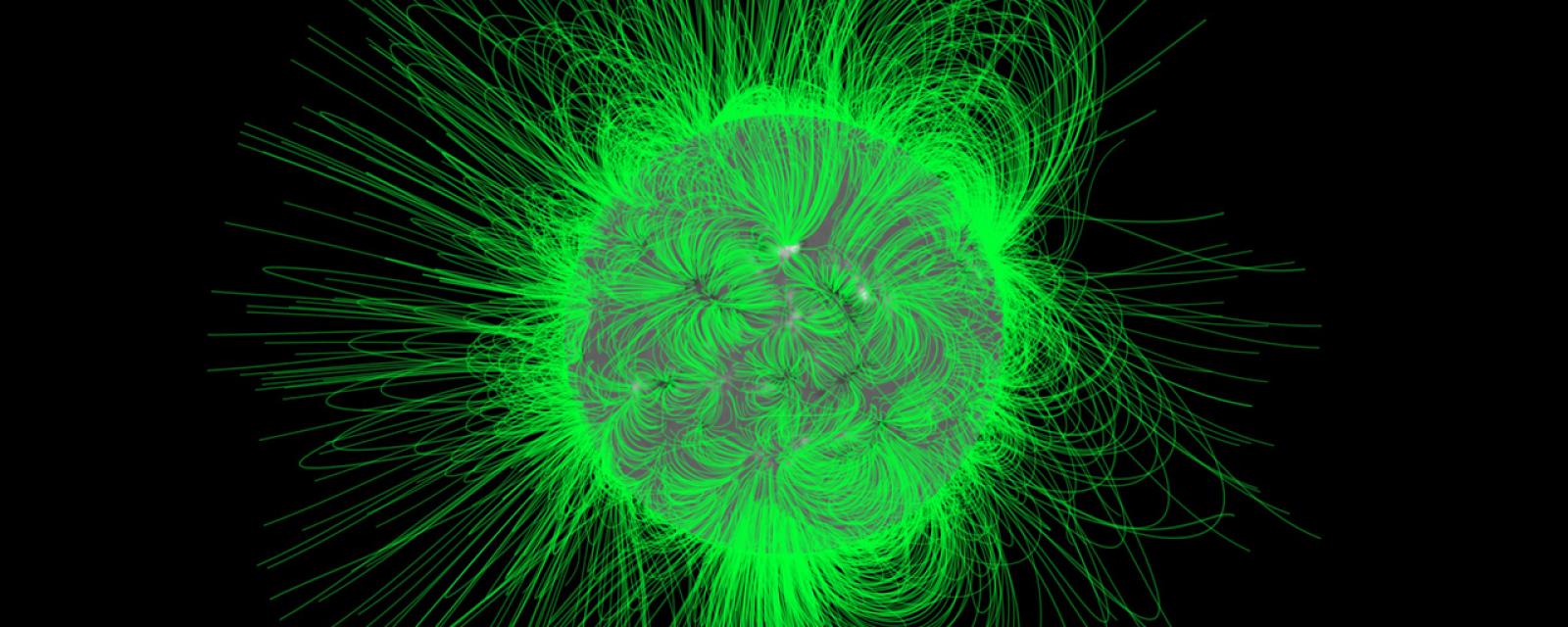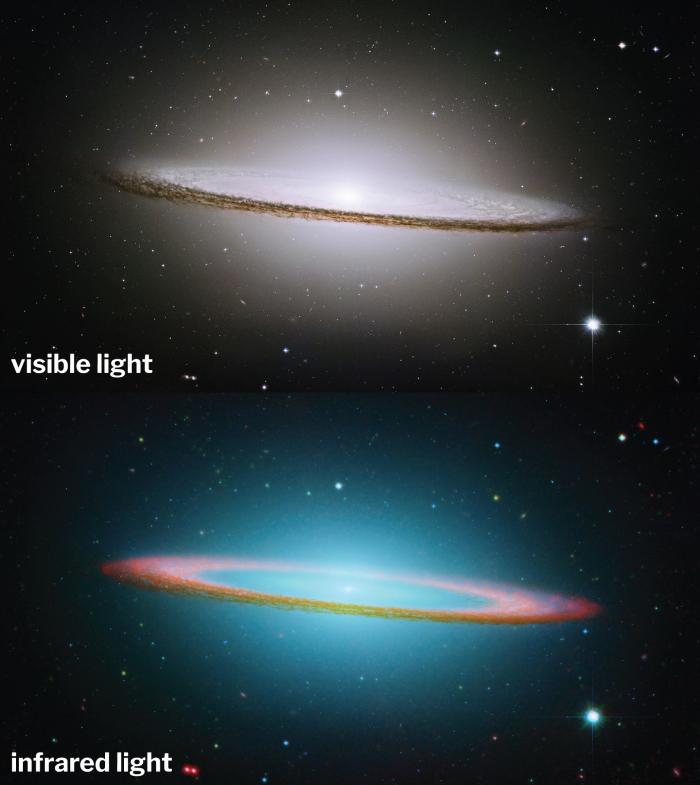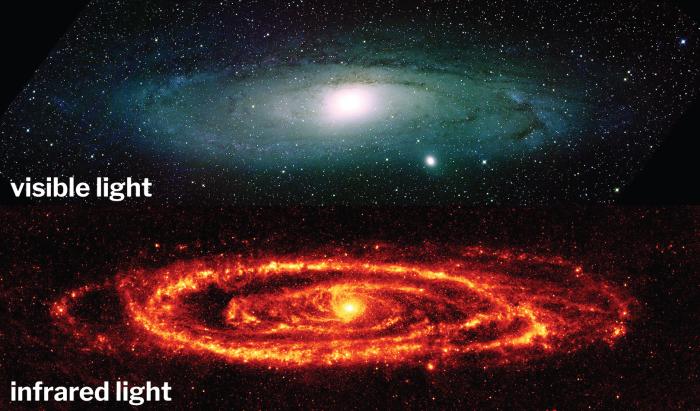
Why so many tools?
NASA spacecraft carry many specialized tools that allow scientists to observe space beyond what we can see with our eyes.
Magnetism—Magnetic field lines dance above the surface of the Sun. While these fields lines are invisible to human eyes, NASA’s Sun-observing SOHO spacecraft, can measure distortions in the Sun’s magnetic field. Using data collected by the spacecraft, scientists created a virtual, 3D model of the field lines.

Infrared—The Sombrero Galaxy has a distinctive ring of dust that circles a bulge of stars, which are both very prominent in the infrared. The Sombrero Galaxy may be a spiral galaxy like the Milky Way, but its orientation makes it looks like a bulging pancake when viewed from our perspective. Our Milky Way would also have a similar appearance if viewed from the side.

Infrared—The Andromeda Galaxy is the nearest spiral galaxy to the Milky Way, around 2.5 million light years away. Once thought to be a twin of our galaxy, its different structure is very evident in infrared light. While it is a spiral galaxy like the Milky Way, its dust falls largely in a huge ring structure, possibly caused by gravitational interactions with its smaller satellite galaxies.
Ultraviolet—This composite video reveals the auroras on Jupiter and Saturn. NASA’s Hubble Space Telescope captured the auroras with its ultraviolet camera. The aurora images are layered over images of the planets taken with a visible light camera.
Spectroscopy—Using the data from a spectrophotometer on the Suomi NPP satellite, NASA scientists are able to measure and track the presence of sulfur dioxide from a volcanic eruption. Using this tool in space, scientists are able to differentiate the hazardous plume of volcanic ash from normal clouds in the atmosphere.
Video and Image Credits
Magnetism: NASA's Goddard Space Flight Center
IR: NASA's Universe of Learning, (Sombrero galaxy) Visible: NASA/Hubble Space Telescope/Hubble Heritage Team. Infrared: NASA/JPL-Caltech/R. Kennicutt (University of Arizona) and the SINGS Team, (Andromeda galaxy) Visible: NOAO/AURA/NSF. Infrared: NASA/JPL-Caltech/K. Gordon (University of Arizona).
Ultraviolet: (Jupiter) NASA, ESA, J. Nichols (University of Leicester), and G. Bacon (STScI) / Acknowledgment: A. Simon (NASA/GSFC) and the OPAL team, (Saturn) NASA, ESA, J. Clarke (Boston Univ.) and G. Bacon (STScI)
Spectroscopy: NASA's Scientific Visualization Studio
Descriptive text adapted from NASA's Scientific Visualization Studio, NASA’s Universe of Learning: ViewSpace, and Hubblesite.org
